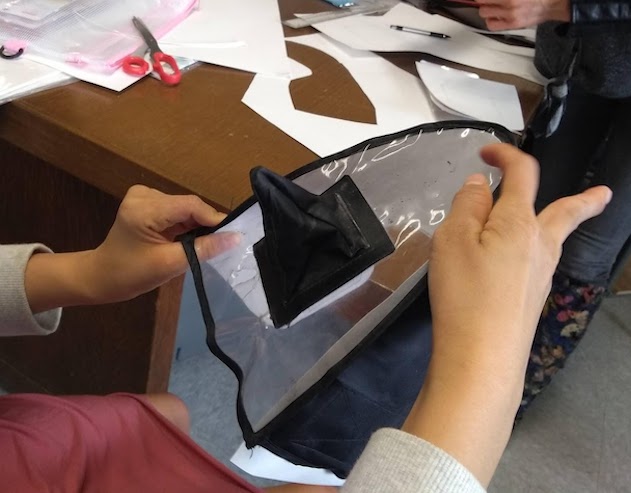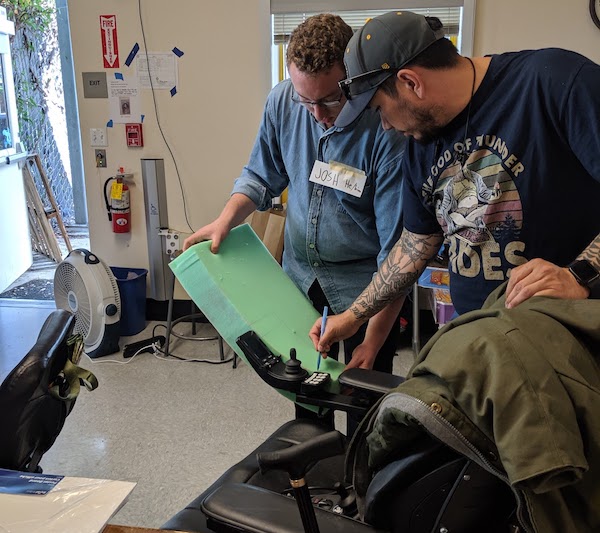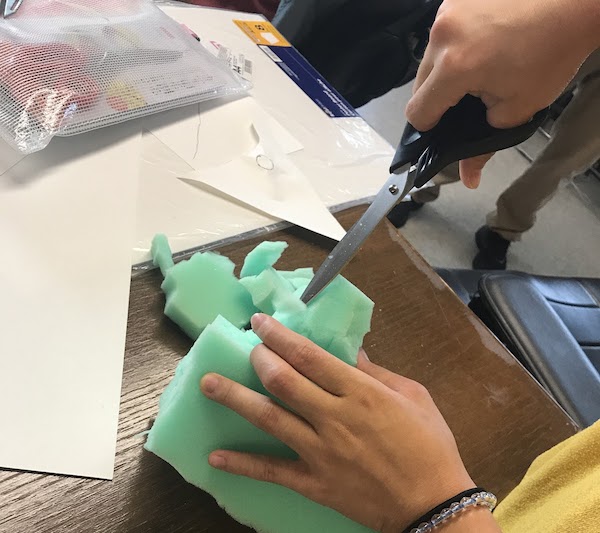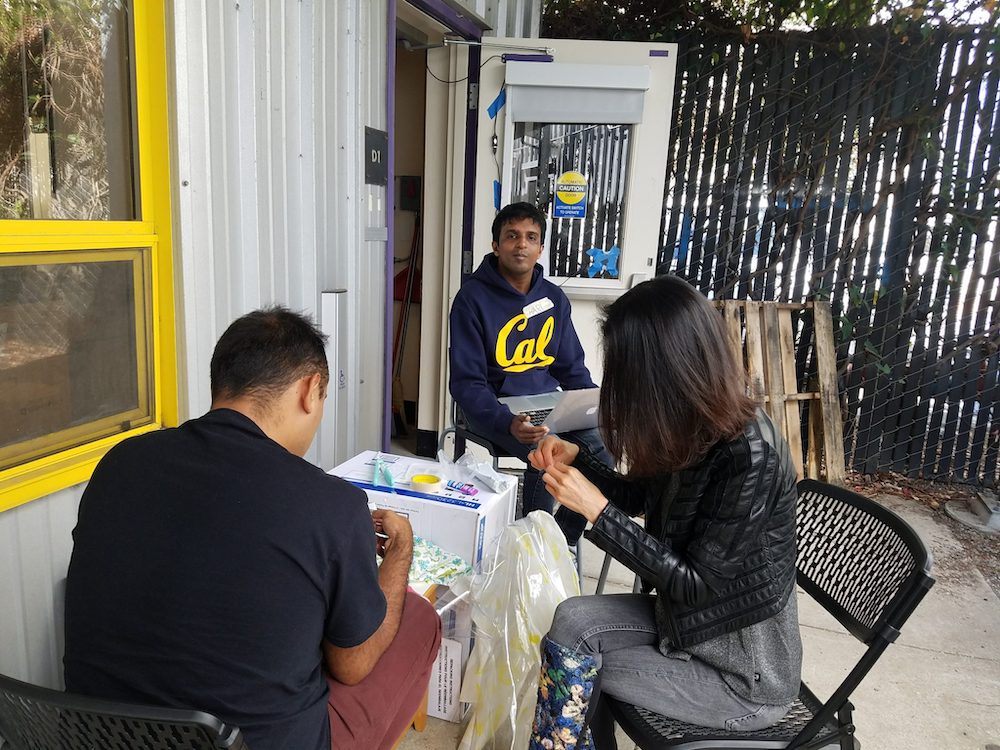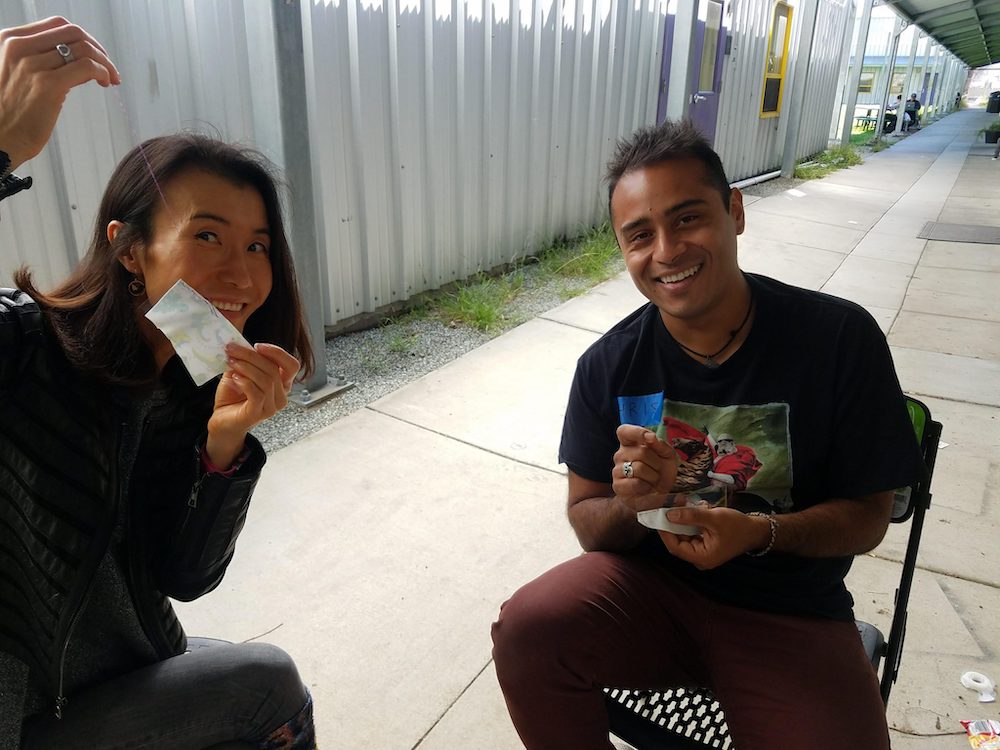Joystick in the Rain
═══ TEAM MEMBERS ═══
Led by Nate Tilton, other members were Gloria and Chris.
═══ PROBLEM ═══
Disabled people in power wheelchairs are unable to freely travel in the rain due to the water which can damage the non-weatherproof electronic mechanisms.
═══ OBJECTIVE ═══
Create a way to protect the power wheelchair joystick and control panel from damage in the rain.
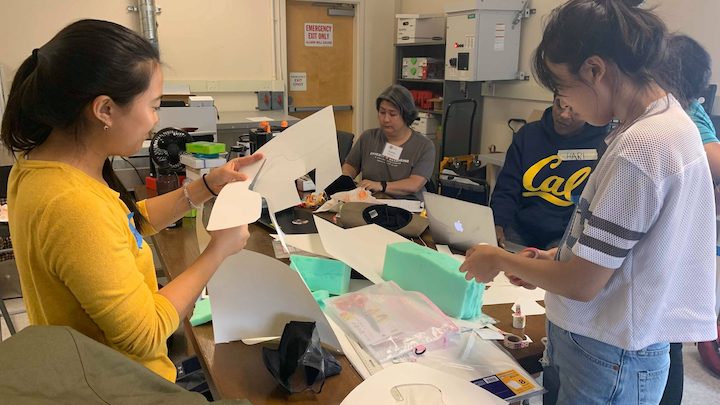
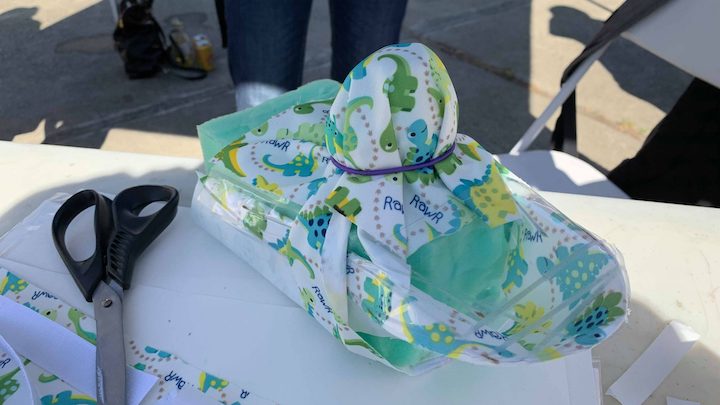
Problem
When it rains we take cover – metaphorically or literally – with a jacket or an umbrella. But what about a wheelchair?
It turns out power wheelchairs are incompatible with the rain.
Power wheelchairs are not weatherproof!! There is some irony in that the very purpose of a mobility device (like a wheelchair) is to get you from point A to B, yet not designed for outdoor travel. Rain damages both the control panel and joystick on the wheelchair arm rendering the wheelchair useless.
Lab manager, Nate Tilton and Prof Karen Nakamura had been discussing this issue for a while. Over the summer, Nate had advocated before the US Congress on behalf of disabled parents as he is the parent of a son with autism. Nate had met Rhode Island Congressional Representative James Langevin, who is the first quadriplegic to serve in Congress. Rep. Langevin had a “really awesome power chair” as it could do all kinds of really cool things like stand up — but it also cost around $100K.
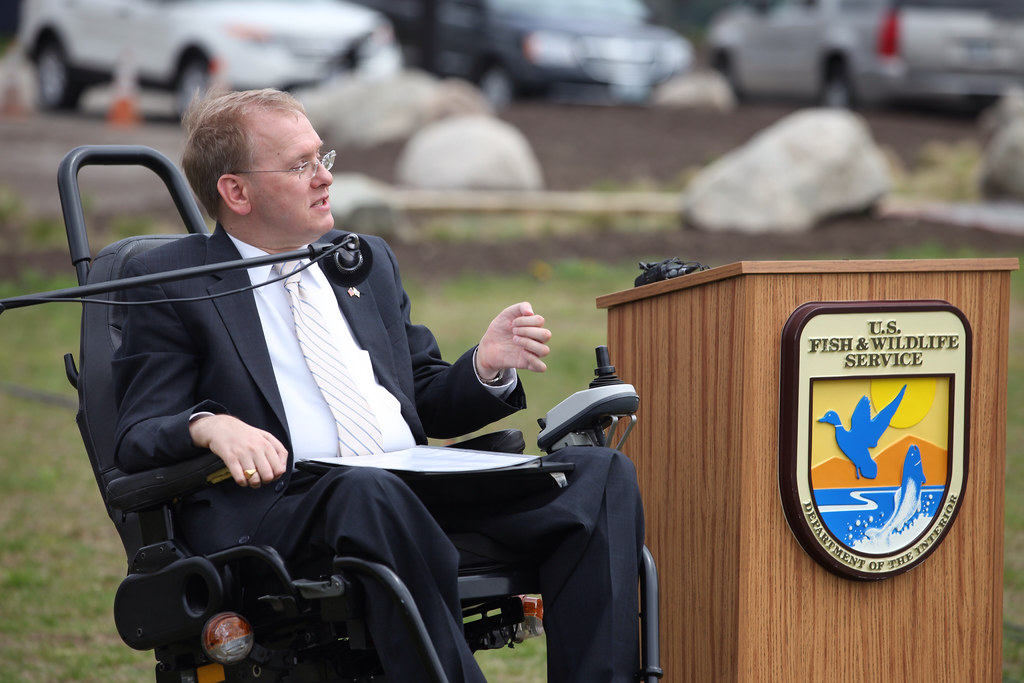
But when asked the question, “Is the joystick/control on your power chair waterproof?”, Rep. Langevin had to respond “…No…!” Nate had to tell him that if a congressional representative could not get a waterproof joystick/control, then what hope did the rest of the wheelchair users have
So the question Nate brought back to the lab was “how might we make joystick/ controls waterproof, out of affordable and durable materials?”
Visitors to the Lab
Community members Corbett Joan O’Toole, Tara Ayres, and Drew McPherson visited our makerspace lab to provide input on potential solutions that could be developed. Corbett O’Toole also discussed more of the trails and travails of wheelchair ownership on this page.
Guest speaker and visitor to the Disability makerspace lab, Corbett Joan O’Toole elaborated on some of the challenges that wheelchair users have to contend with. Corbett is an artist, speaker, writer and publisher at the Reclamation Press with a focus on disabled women and queers.
Corbett explained how the repair process for a non-operational power wheelchair could take anywhere from a shocking 33 days to 55 days leaving the user without a wheelchair in the interim.
Depending on insurance, for people on Medicare the cost of DME (if covered at all) is 80% paid by insurance and 20% paid by customer. If you have Medicaid/MediCal then the 20% may be paid by them. Most insurance companies will not allow you to have two wheelchairs at the same time, so you’re not allowed to have a backup chair and they won’t lend you a loaner chair while your chair is being repaired.
Prototyping
Corbett had a commercial joystick cover for her wheelchair that was made in Taiwan but not available in the United States. Using her model as a template, the lab team started work on developing a similar, low-cost solution using everyday cheap materials. Students experimented with plastic sheets, water-resistant fabric (the type used for cheap tablecloths), hot glue gun, scissors, sewing needle and thread.
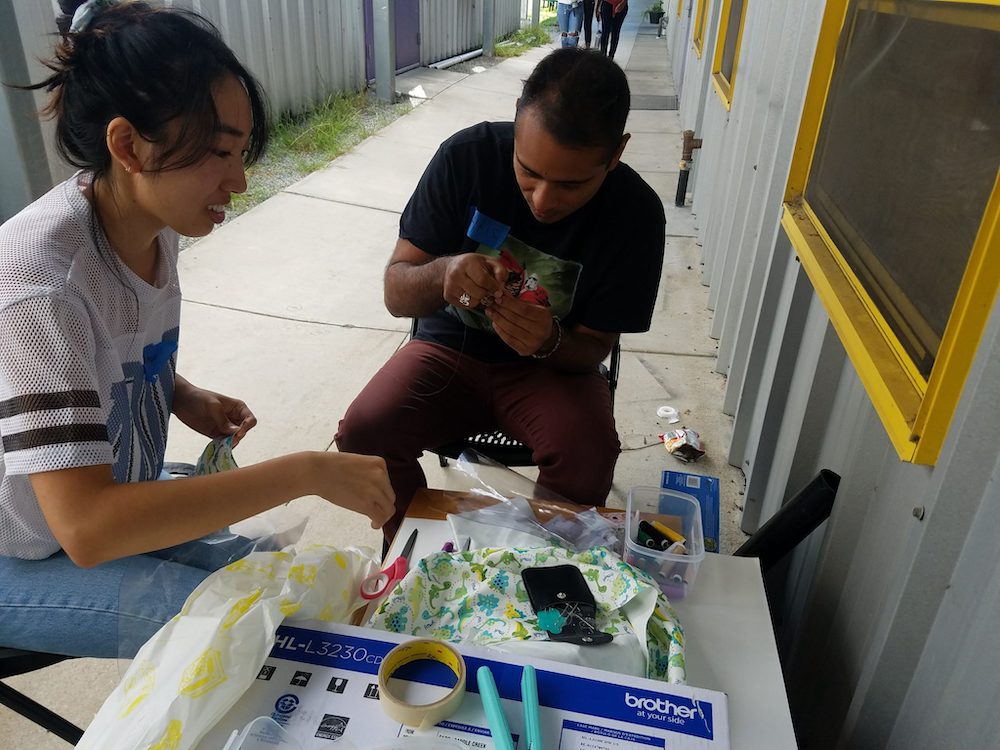
“How to” workshop at East Bay Disaster Preparedness Fair
The templates were displayed at East Bay Disaster Preparedness Fair held at the James Kenney Park on October 12, 2019 hosted by the Berkeley CERT and Berkeley Disaster Preparedness Neighborhood Network – BDPNN. With climate change, PG&E power shutoffs, and earthquake risks looming for Bay Area residents, the Fair was designed to help inform about what people can do to prepare. And of course the Cal Mad Lab wanted to make sure disabled people were prepared too!
East Bay Community Emergency Prep Fair (Video) →
Manning the UC Berkeley and Mad Lab Booth were Nate, Gloria, Chris, as well as volunteers from Prof. Nakamura’s Anthropology 189 class.
First, Chris taught the volunteers on how to create the cover. The volunteers were then able to teach people throughout the day how to create the covers.
The volunteers had templates cut out for each piece. This allowed people to use the templates to cut out pieces and create pieces of the cover right there. It was more of a workshop, as they had materials such as heater sealers and glue guns that some people may not have had at home.
The people that checked it out thought it was really cool! They liked how simple it was to do and how cheap they could make a cover.
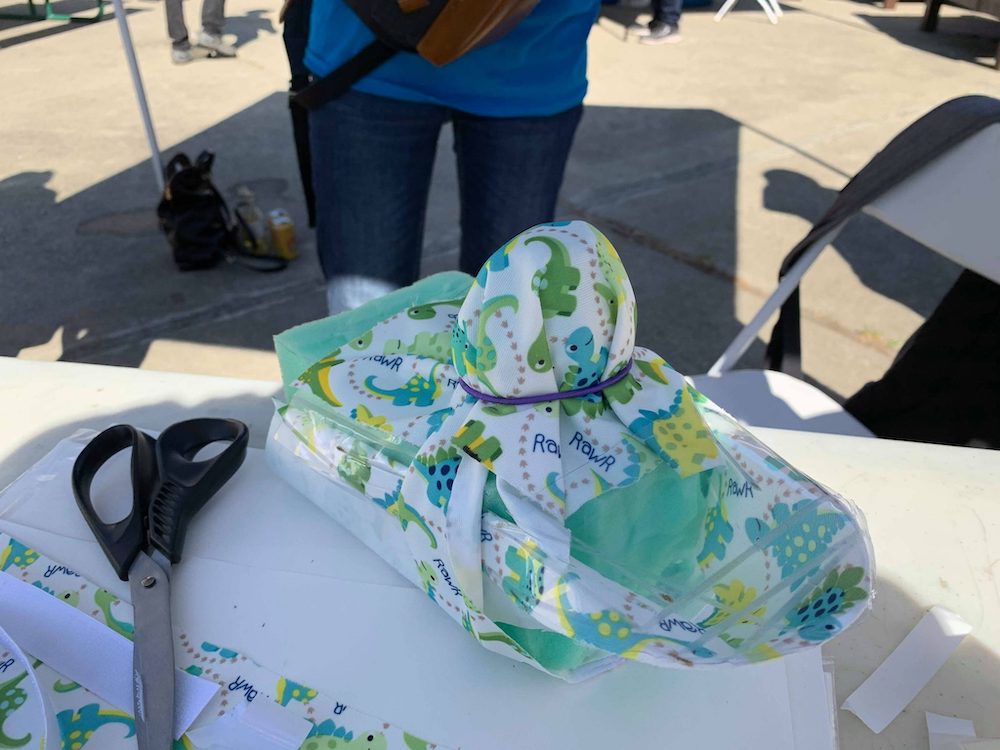
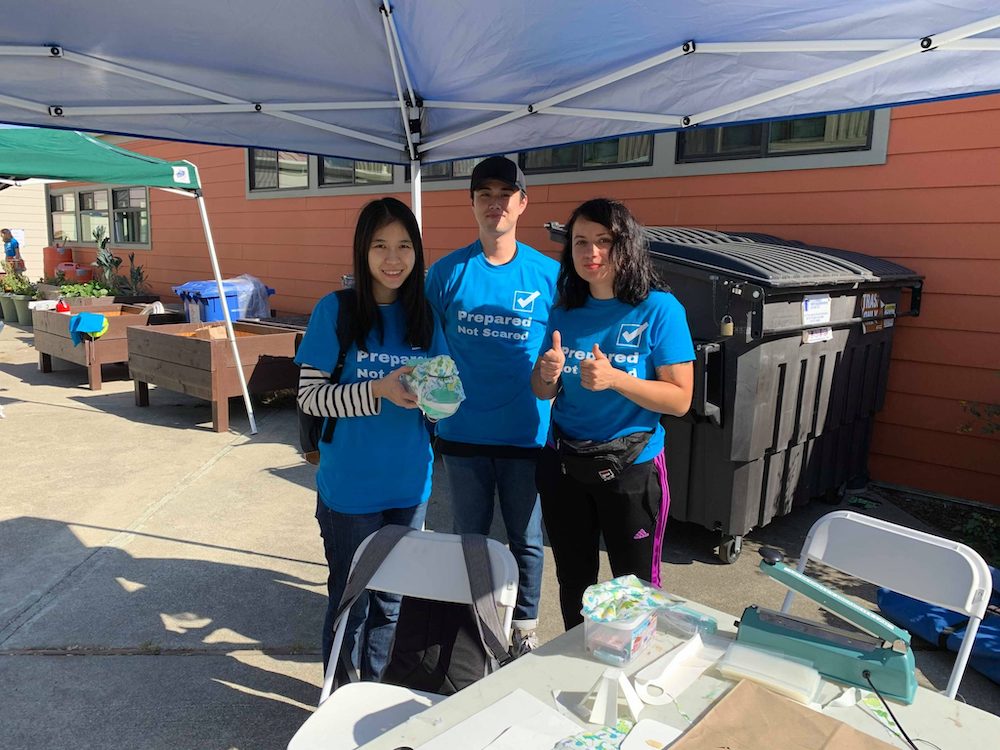
Note: Comments are held for review before publicly posted.


